Asus ROG Ally review
First announced on social media during April Fool's Day of all times, Asus quickly proved that the Asus ROG Ally was no laughing matter. For the uninitiated, it's a PC gaming handheld system that aims to avoid sacrificing performance or portability.
Asus has been serious about dipping its toes into the portable market, and with this latest endeavor, it seems it's ready to dive in headfirst.
There are obvious comparisons between the ROG Ally and Valve's own Steam Deck, and while the former is clearly competing with the latter, Asus asserts that this portable was five years in the making. And after taking it for a brief spin, I found it to be a very impressive machine that clearly has a lot of development behind it.
It'll be interesting to see how the Asus ROG Ally matches up against the Steam Deck and maybe even the Nintendo Switch, the dominant force in the handheld market. But considering that for nearly an entire generation the Switch has gone unchallenged, it’s refreshing to see so much competition, especially handhelds that are willing to push the limits of what these consoles are capable of.
Asus ROG Ally: Price and availability
Asus has been very tight-lipped about the pricing and availability of its Asus ROG Ally. We do know that it’ll be launching on May 11, 2023 and that, according to UK representatives, it’ll be priced under $1,000 (around £804 / AU$1,496) with two available models.
Otherwise, it remains to be seen how it’ll compare to its direct competition, the Steam Deck, in terms of price. The latter has three models: a $399 version, a $529 model, and a $649 model. Considering what’s under the hood for the ROG Ally, we can safely assume that there won’t be a $399 version. As for availability, we know it’ll most likely see release in the US and UK but in other regions it remains to be seen.
Asus ROG Ally: Design


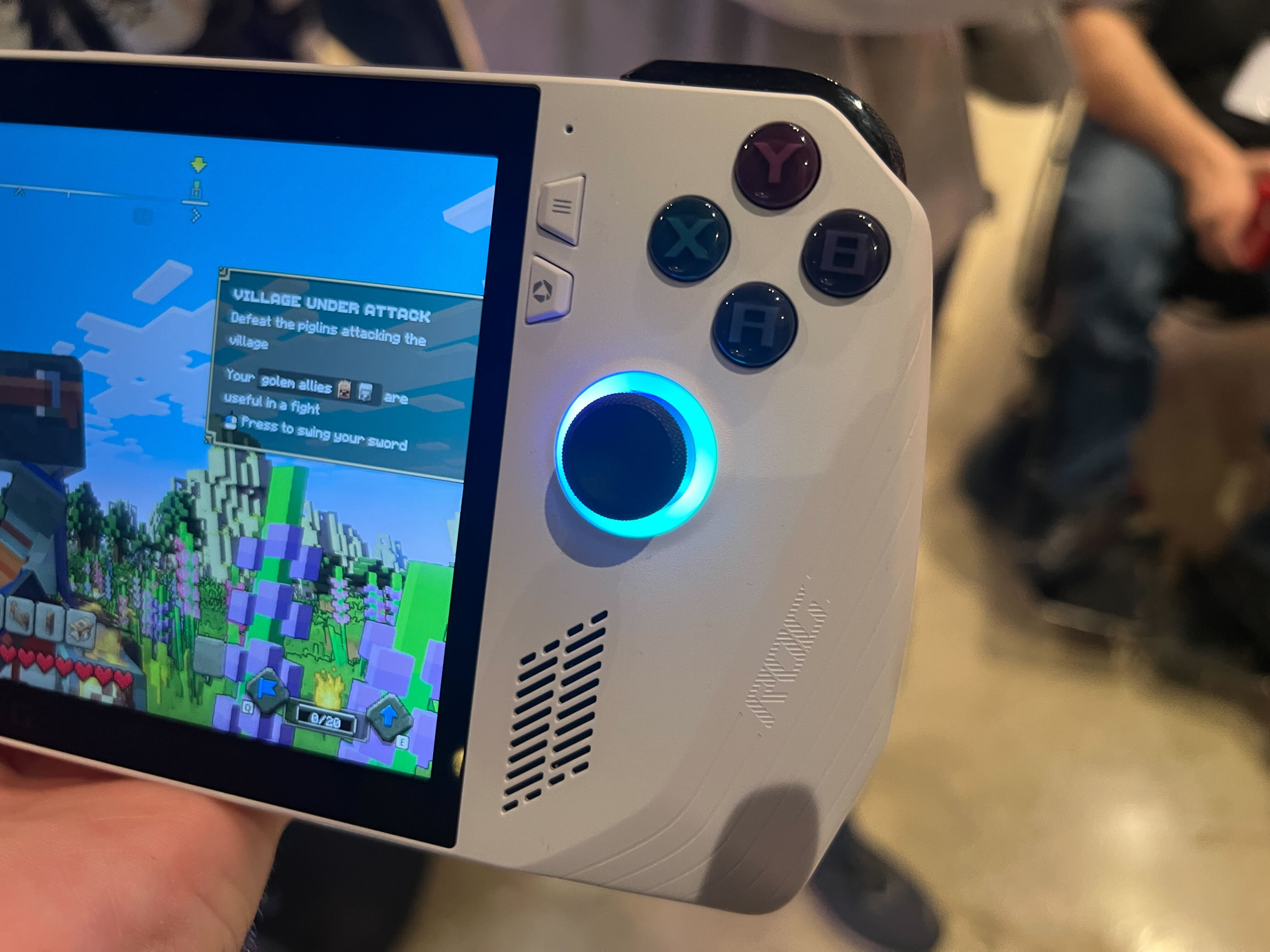
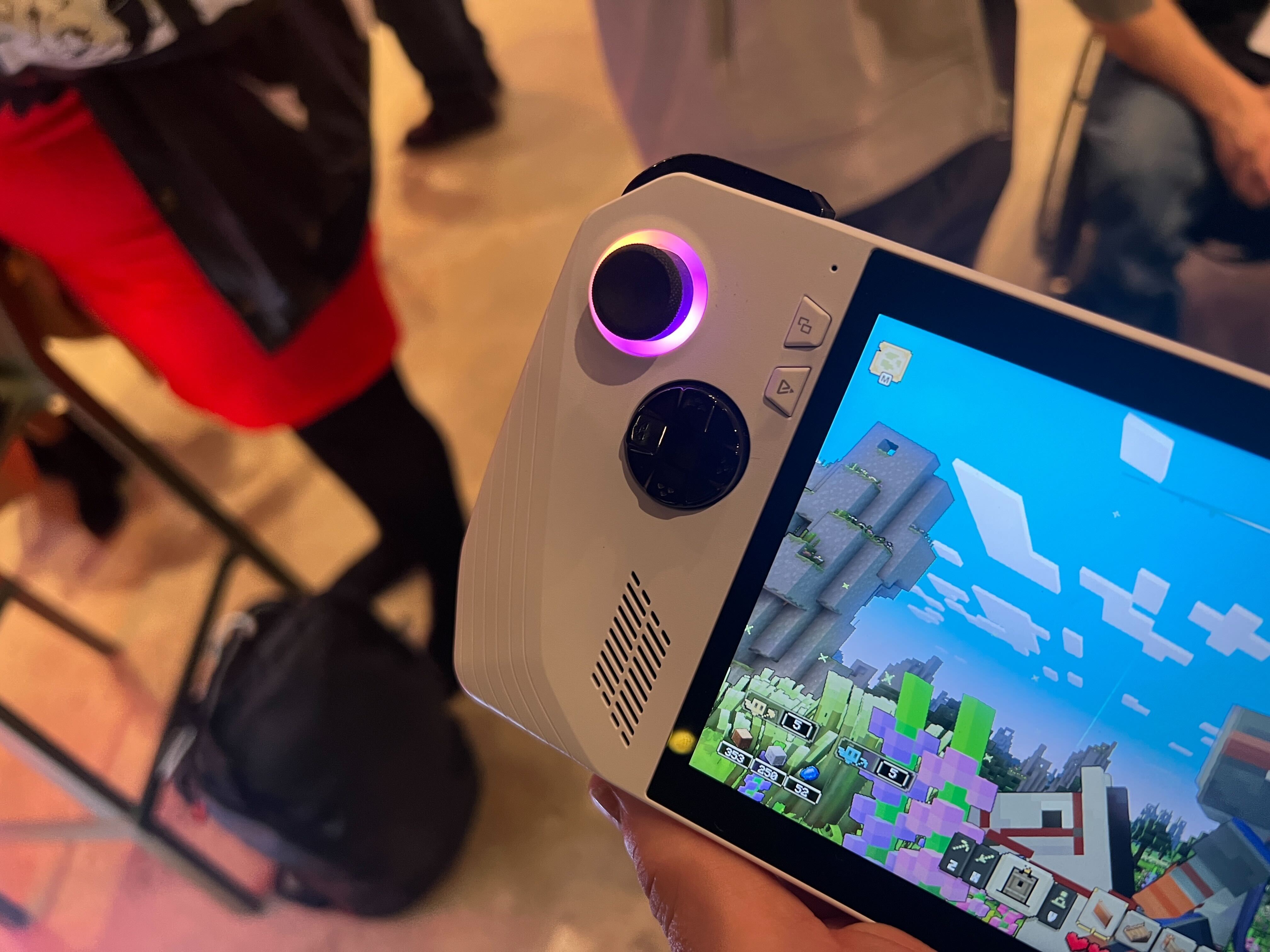
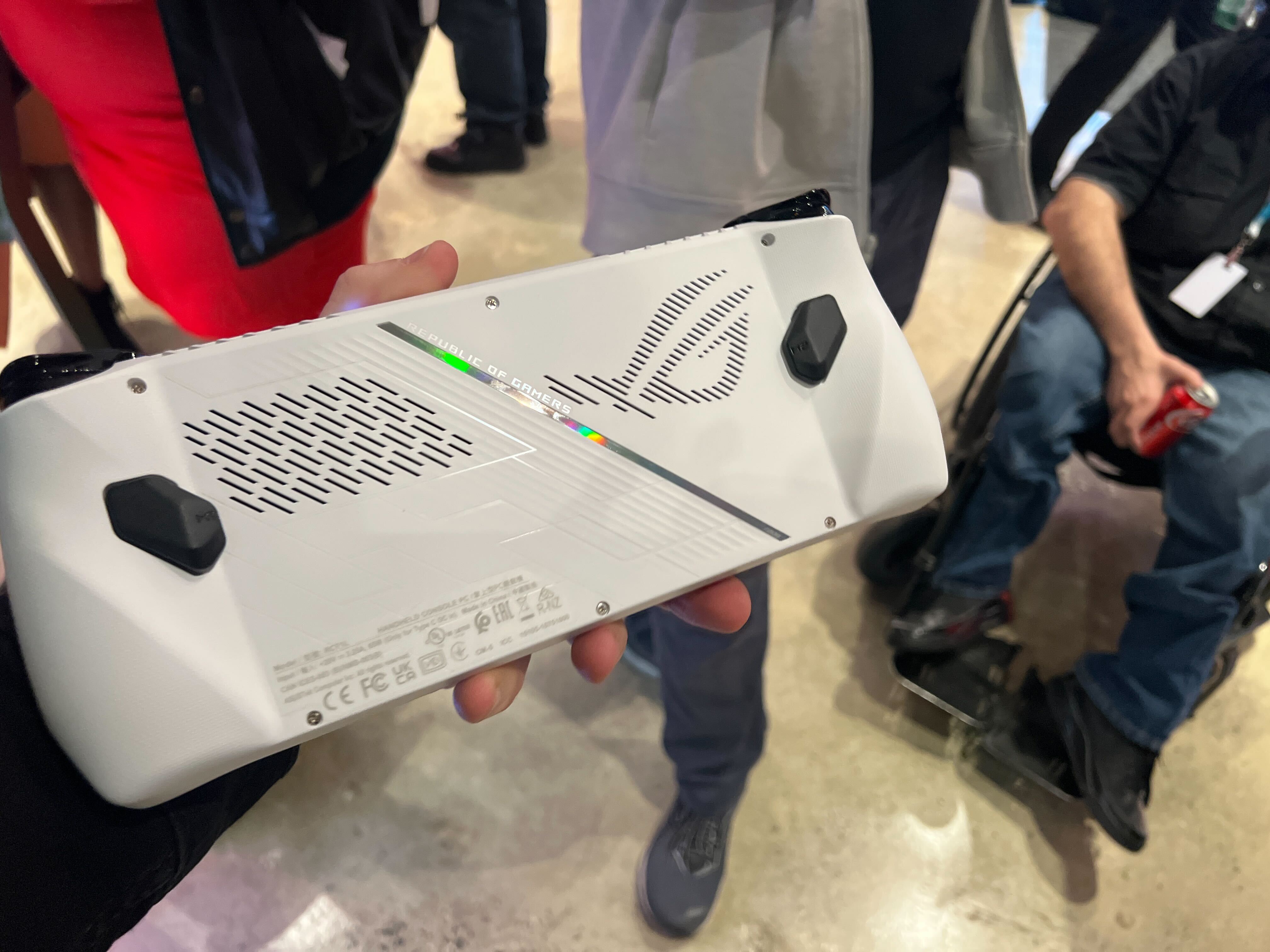



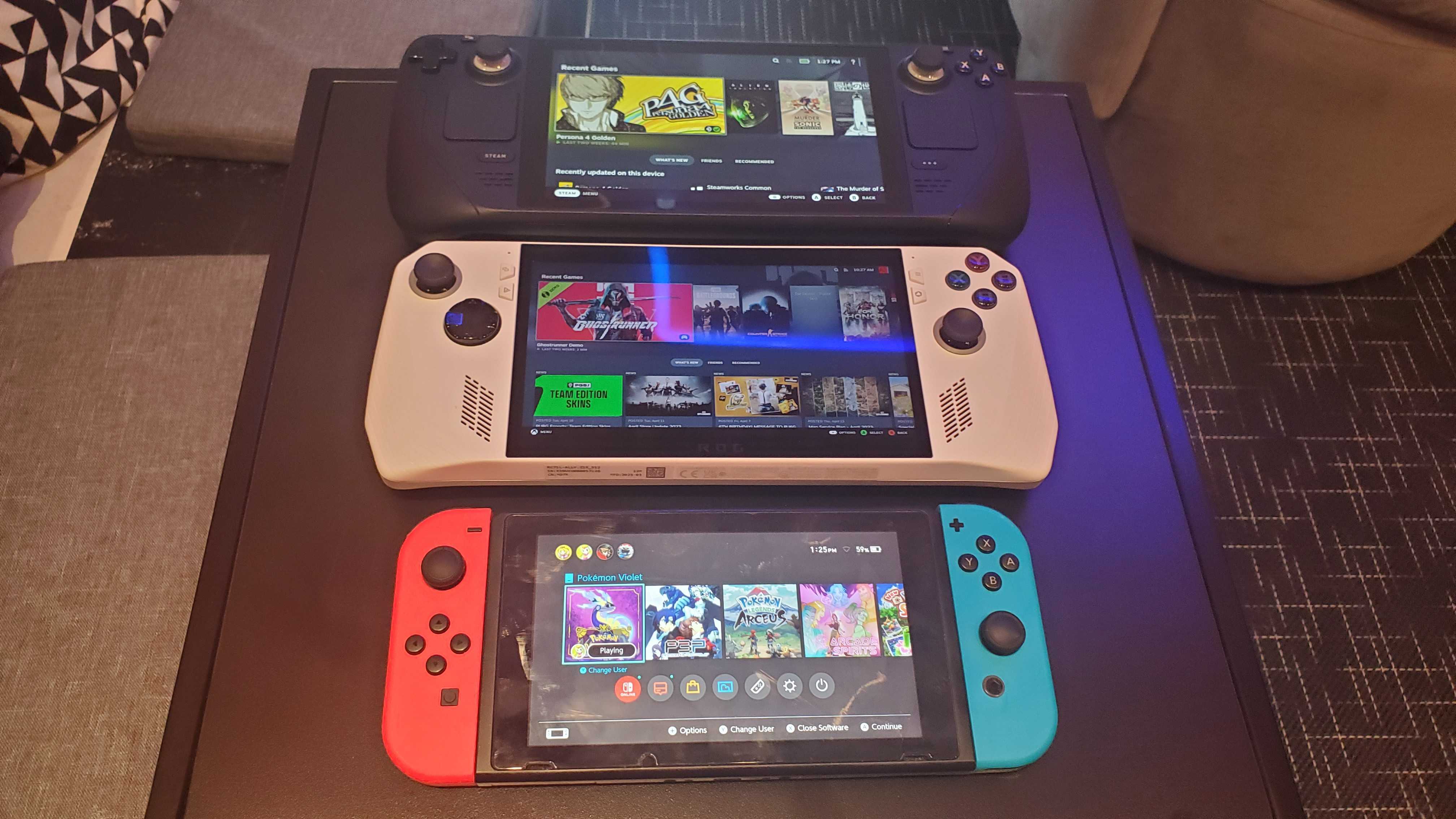
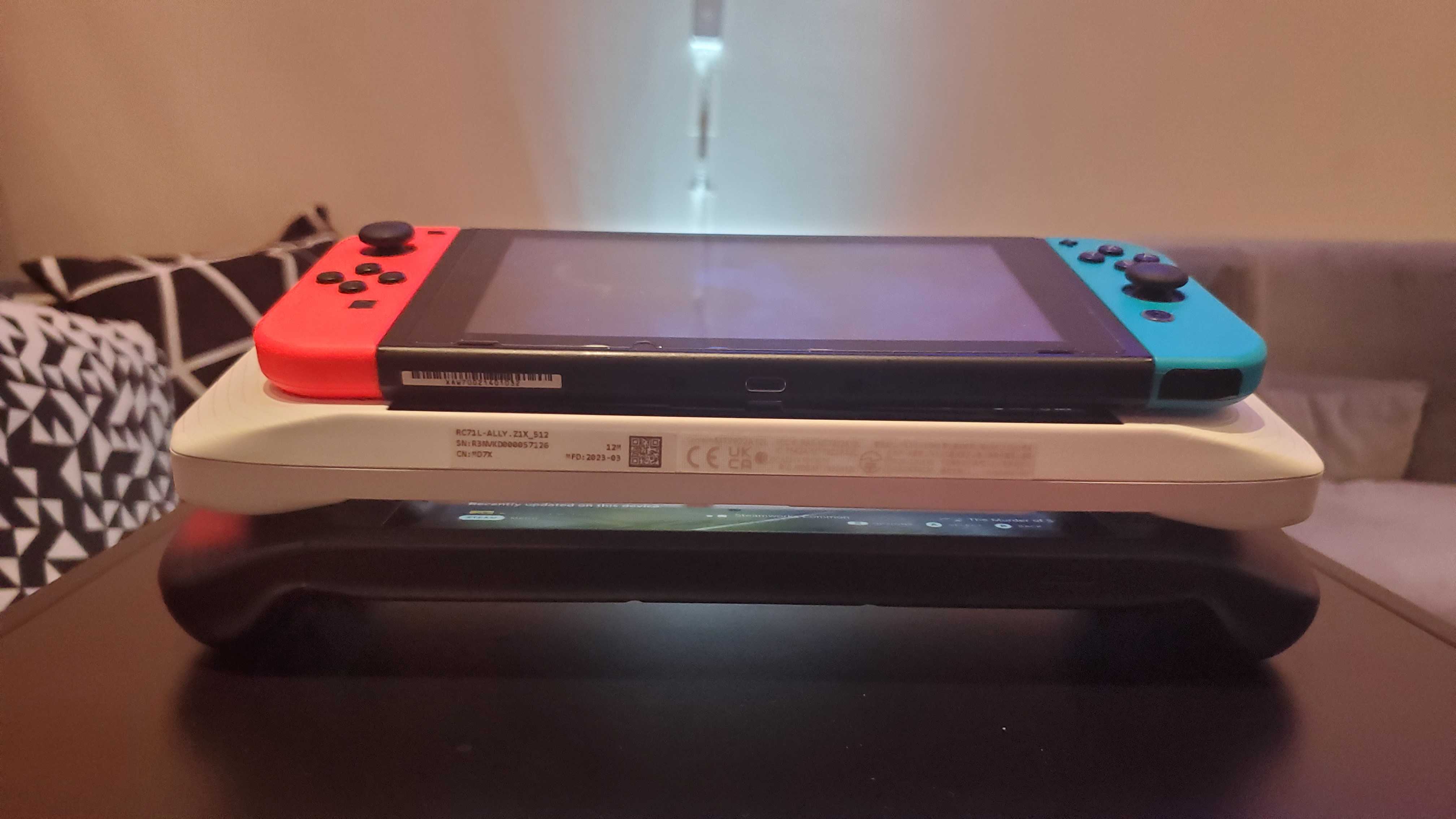

The most noticeable aspect of the Asus ROG Ally is its distinctive white color and honeycomb design. The RGB lighting on each of the analog sticks also adds a beautiful touch to an already gorgeous chassis.
Picking it up, it becomes apparent that the honeycomb design serves a more practical purpose of making the system lighter, which rings true with its impressive 608g weight. It’s a little shorter in length than the Steam Deck, and thinner overall. And yet it manages to look the part of a handheld, unlike the toy look of the Valve-made portable.
The light weight is sure to be a huge benefit, as it’s easier to hold it up for long periods of time. And it being white is sure to reduce the amount of heat being trapped in your hands, which should hopefully reduce sweating for those lengthy gaming sessions.
The analog sticks have a nice grip to them, and seem to be of good quality. I also love the placement of the six triggers; four on the shoulders of the handheld and two on the back. They feel surprisingly natural to rest your fingers on and press, even the back ones.
The display is also quite impressive, a full HD with a 120Hz refresh rate, 7ms response time, and 500 nits brightness that allows you to play it in any lighting condition. The audio quality is excellent as well, with surprisingly clear sound that reflects both the music and sound design of any game that you play.
The ventilation system was built with the prediction in mind that the handheld must adjust to the system being moved around at all times instead of being stationary like your PC or laptop. And it does do its job of keeping the system running smoothly during intense gameplay sessions. However, I did notice that it runs very hot very quickly at the top of the portable, where your fingers are likely to be.
Asus ROG Ally: Performance

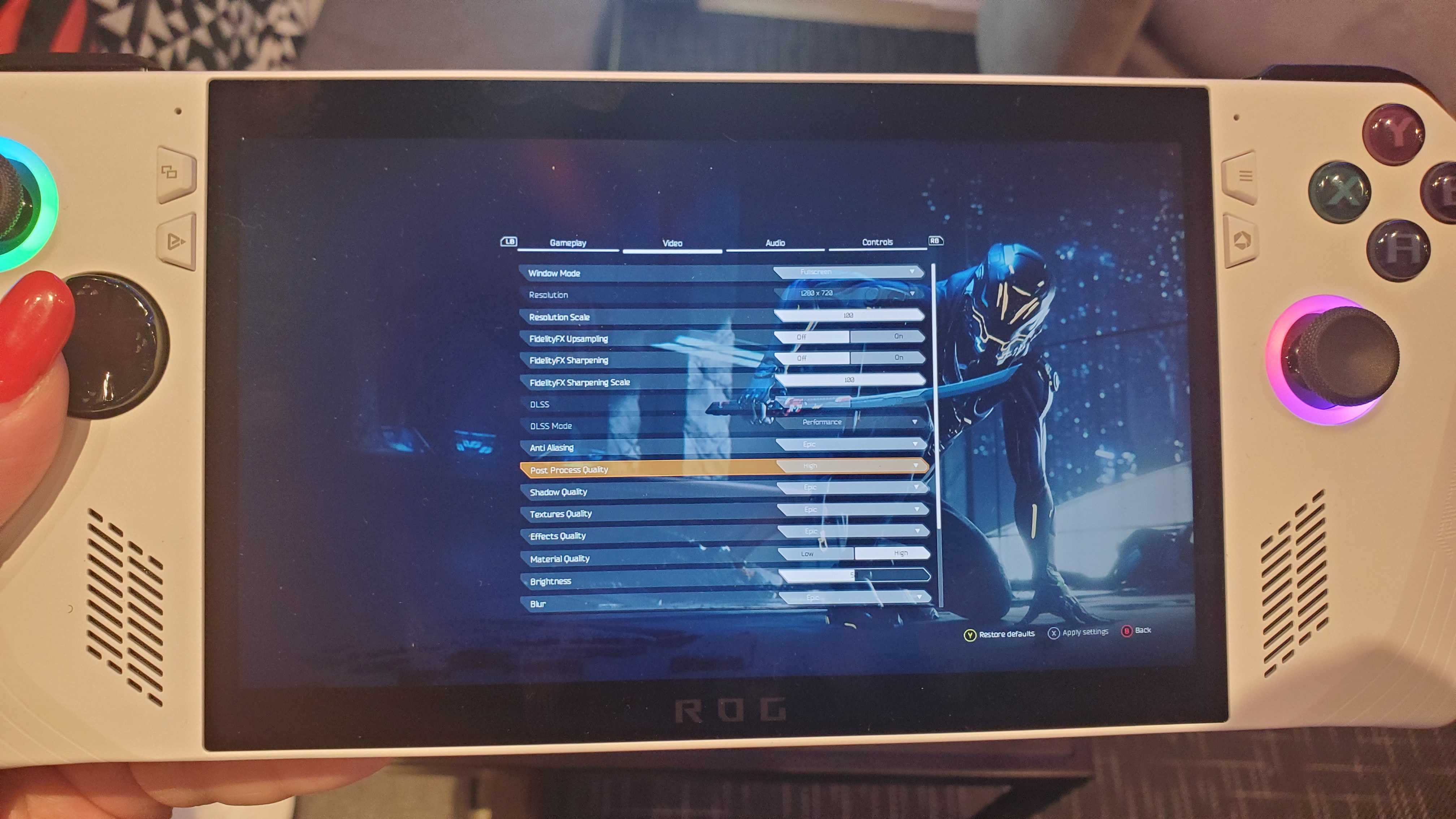
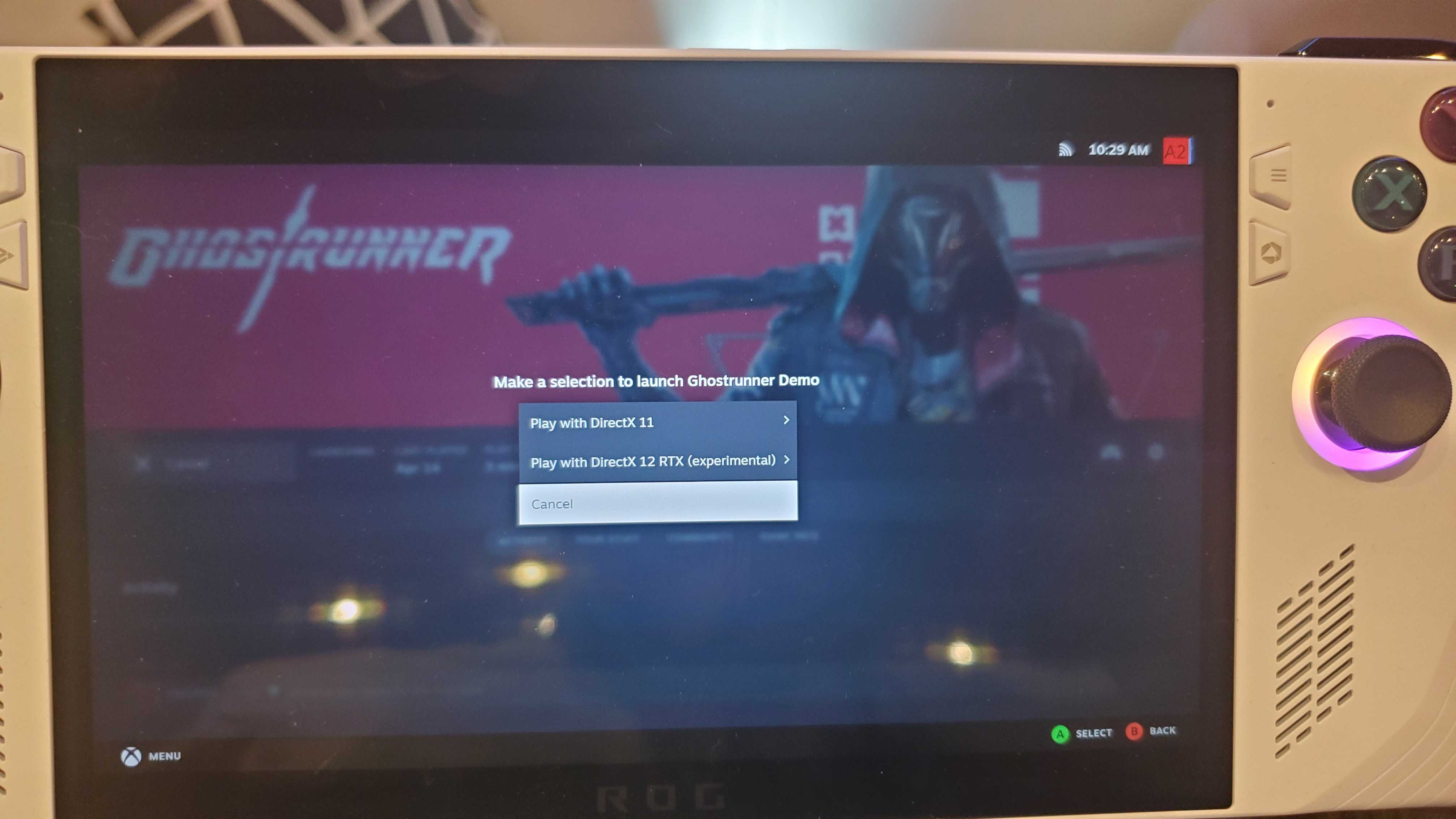
The ROG Ally has Windows 11 built in, which may sound risky considering all the various issues with the OS, but it ends up giving players more options and flexibility in how they use the device.
Not only is having immediate access to this OS perfect for allowing full compatibility with Xbox Games Pass, Steam, EA App, and Epic Games Store’s libraries, but it also means that you can easily turn this portable into a mini desktop replacement by connecting a Bluetooth keyboard and mouse, without having to mess around with Linux, which you need to do with the Steam Deck.
It also runs Armoury Crate CE, which is the software that lets you control performance settings, customize key mapping, and more. The software itself tends to be a bit divisive among gamers but for this system, it works just fine for its purpose.
Under the hood is what’s far more interesting, as the thinner than the Steam Deck chassis contains both a full CPU and GPU. The CPU is a Zen 4-powered AMD Ryzen Z1 chip, which was developed by the chip maker specifically for the ROG Ally in order to better optimize for a mobile device.
It also features AMD’s graphical RDNA3 technology which is even more impressive of a feat. The GPU is the XG mobile, normally a super compact yet powerful external GPU for PCs but has been repurposed into an internal one for the handheld.
While trying out Ghostrunner, I was given the option of either playing with DirectX 11 or the more experimental (it states as such in the menu) DirectX 12. I chose DirectX 12 and the gameplay was extremely smooth with no noticeable slowdown, and the graphics were stunning. However, after I died and reloaded, there was a massive slowdown until I reset and activated DirectX 11, which offered a far more stable experience.
Asus ROG Ally: Early verdict
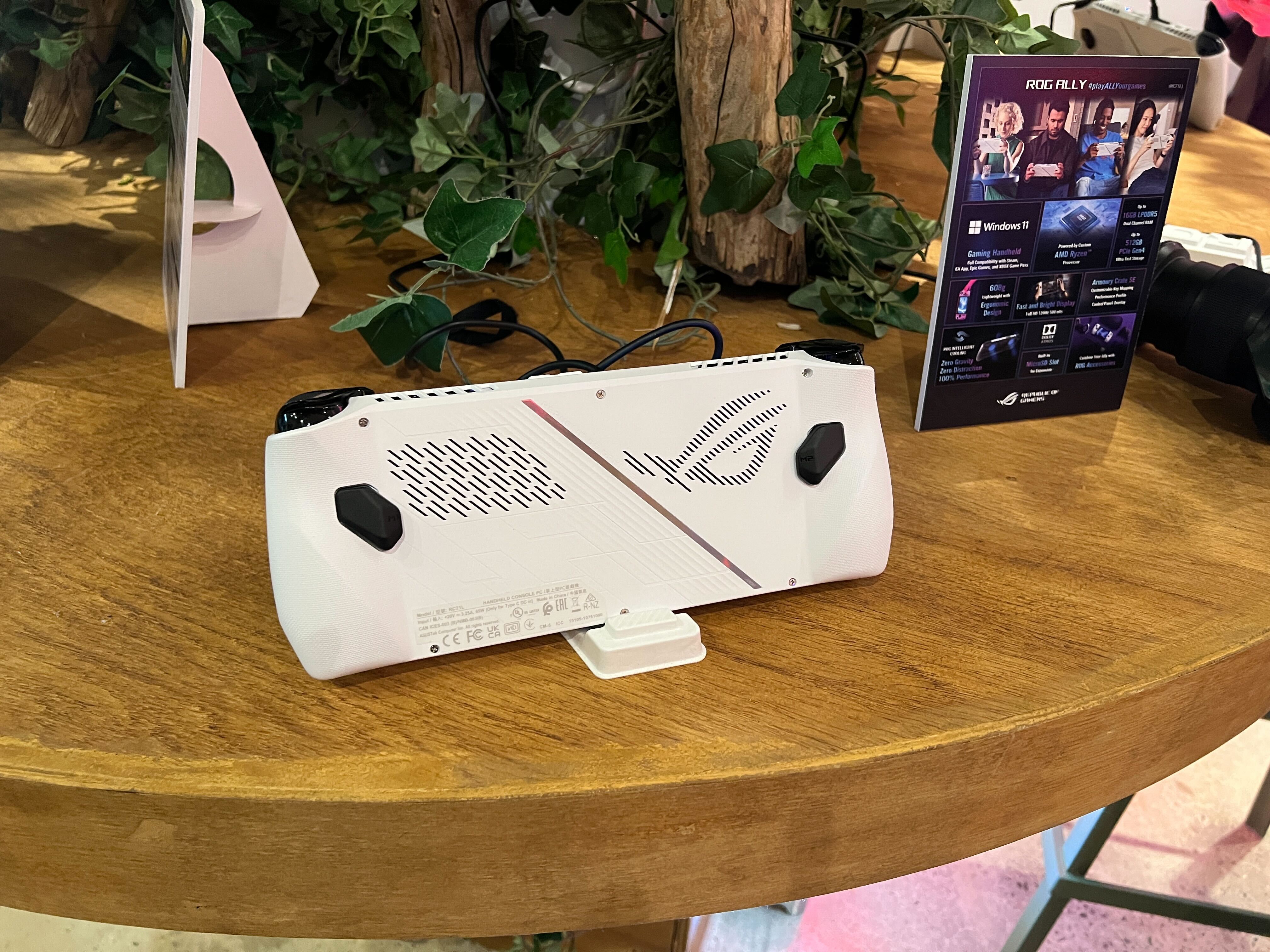
From what I saw and played around with, I’m extremely and surprisingly impressed. Asus has truly put a considerable amount of effort into the development of the ROG Ally. If there’s one thing you take away from this hands-on preview, it’s that this is no throwaway plastic hunk of junk meant to be a cursory attempt at Steam Deck competition.
This is a serious entry that’s poised to change the perception of what portable gaming systems are capable of.
However, my biggest concern is the pricing. As stacked as it is spec-wise, if the price is too high then it will fail to attract a proper audience. It can double as a desktop placement but most will still see this as primarily a gaming machine and most buyers are only so willing to pay a certain price before it’s perceived as too expensive. Hopefully, Asus won’t disappoint in that regard, or it may find itself with a very costly dud in its hands.
0 comments:
Post a Comment